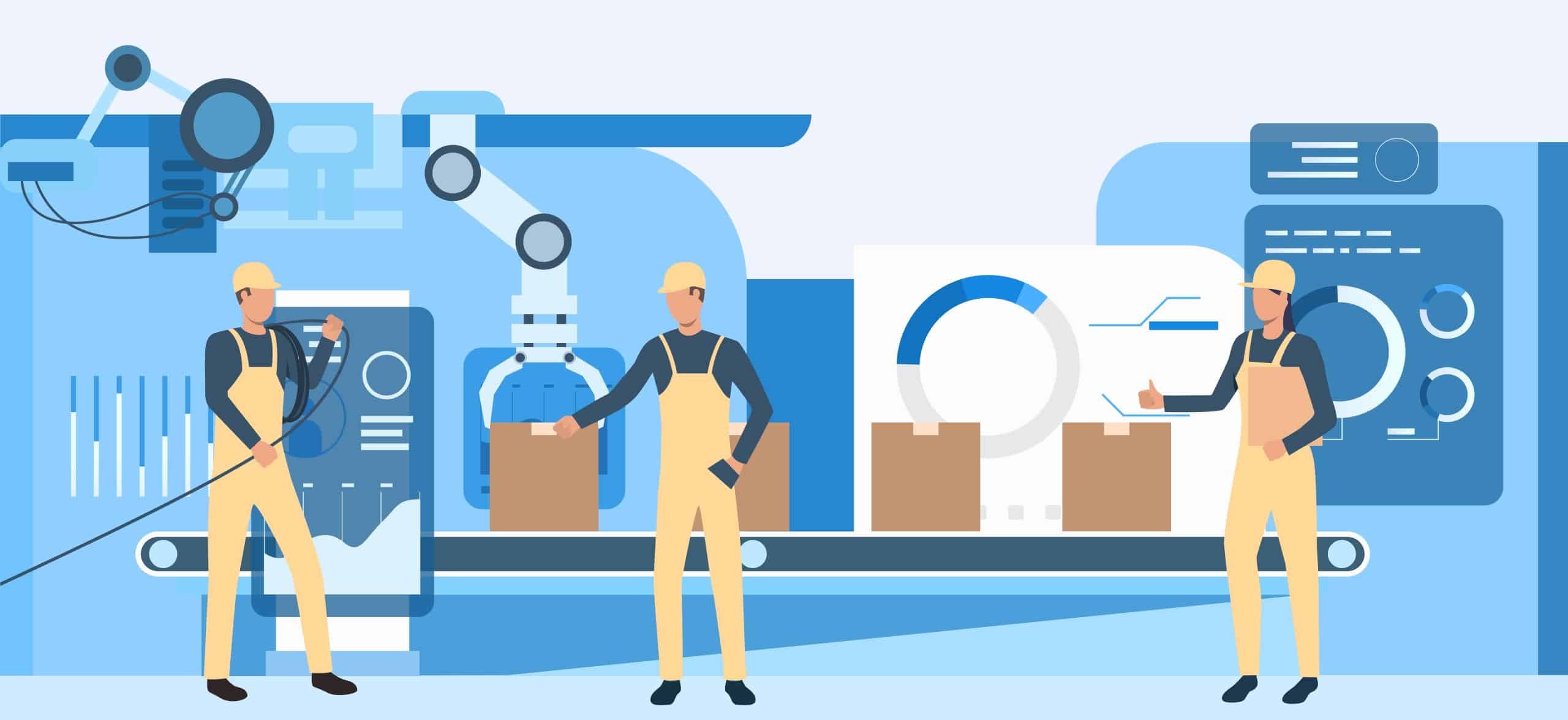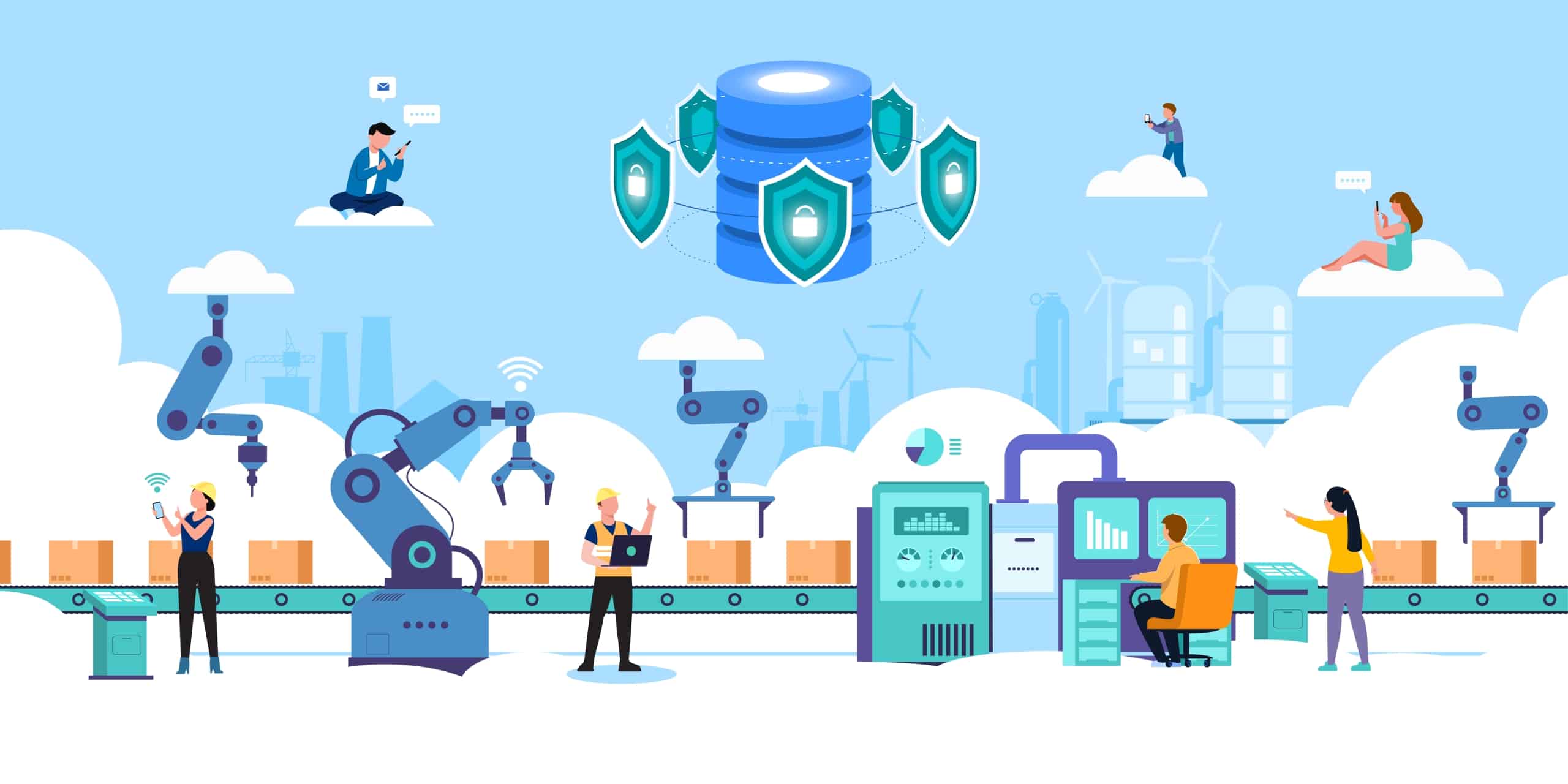The Growing Demand for Contactless Production
The way industries approach production has changed significantly in the post-pandemic world, with a focus on avoiding human contact with goods throughout the wet wipes manufacturing process and prioritizing cleanliness. Contactless manufacturing methods are in high demand in the wet wipes business, which is crucial to everyday hygiene practices. Consumer concerns over contamination and the need for improved safety measures in items that are directly tied to personal hygiene and sanitation are the driving forces behind this change.
Wet wipes manufacturers are using automated methods that minimize the need for human interaction as a result of growing demand to guarantee that their manufacturing lines satisfy the highest hygienic requirements. By removing the chance of contamination from handling or human mistake, contactless manufacturing adds an extra degree of security. Given that wet wipes are often used to keep surfaces clean, it is imperative that the manufacturing process for these products adhere to these stricter cleaning guidelines.
Global health concerns are becoming more widely known, which is driving demand for contactless manufacturing. As customers get more knowledgeable and health-conscious, they anticipate that producers will use cutting-edge technology to ensure the hygienic and secure manufacturing processes of their goods. In addition to addressing these demands, wet wipes producers that incorporate automation and contactless technologies into their manufacturing lines are establishing themselves as pioneers in a sector where safety is paramount.
Contactless manufacturing also satisfies new regulatory criteria in addition to satisfying customer needs. Global health and safety regulations are become more strict, especially for items pertaining to healthcare and hygiene. Wet wipes manufacturers may reduce costs and increase productivity by using automated and contactless technologies to assure compliance with these changing standards. These solutions also lower hazards of contamination and human labor. Contactless manufacturing is a crucial development in the wet wipes business that will shape its future for years to come because of its mix of safety, efficiency, and compliance.
Automated Sanitation Processes in Wet Wipes Manufacturing
In the production of wet wipes, automated sanitation procedures are now essential for guaranteeing the security of the product as well as operational effectiveness. Wet wipes manufacturers are using technology to incorporate automated sanitation into their wet wipes manufacturing processes as customer demand for clean goods grows. These procedures are intended to remove any possibility of contamination, guaranteeing that the wet wipes that are generated are sterile and suitable for use in daily hygiene and personal care routines.
UV sterilization is one of the automated sanitation methods most often utilized in the production of wet wipes. When it comes to eliminating bacteria, viruses, and other germs that can contaminate the wipes during manufacture, ultraviolet (UV) light is quite successful. UV sterilization systems are often included into the wet wipes machines; they may be used to sterilize the parts of the machine that come into contact with the product at regular intervals or in between manufacturing batches. Without interfering with the wet wipes manufacturing process, this approach provides a chemical-free way to maintain high standards of cleanliness.
Automated steam cleaning is another important technological advancement. It sanitizes vital parts like conveyor belts, rollers, and cutting blades using high-temperature steam. Because steam can reach all surfaces and get into places that are hard to clean by hand, it is very effective. This guarantees that throughout the wet wipes manufacturing process, every machine component will be sanitary and free of impurities. It is possible to configure automated steam cleaning systems to run at certain intervals, which minimizes the need for human interaction and guarantees a constant degree of sanitation.
Certain wet wipes machines come with self-sanitizing ingredients in addition to steam cleaning and UV sterilization. These materials are employed in machine parts that come into direct contact with the product; they often include antibacterial qualities. The wipes stay uncontaminated as they pass through the wet wipes manufacturing process because the antimicrobial surfaces stop the development of germs and other dangerous pathogens.
Wet wipes manufacturers increase both the overall production efficiency and product safety by using these automated sanitation methods. By reducing the need for manual cleaning, these solutions boost productivity while minimizing downtime. Furthermore, automated sanitation guarantees that wet wipes manufacturers can reliably fulfill the high health and safety requirements needed in today’s marketplace, especially as international regulatory agencies place more restrictions on personal hygiene goods. Ensuring the quality of the wet wipes produced and preserving customer confidence depend heavily on this emphasis on cleanliness.
Innovations in Contactless Packaging
The packing step of the wet wipes manufacturing process is crucial and poses the largest risk of contamination in the wet wipes business. Wet wipes manufacturers are now putting a lot of emphasis on contactless packaging technologies as hygiene and safety have taken center stage in post-pandemic production. By eliminating human touch with the product, these advances make sure that the packing process is completely automated and hygienic from beginning to end. Wet wipes manufacturers may address customer demand for hygiene-focused solutions while improving product safety by using these innovative technologies.
Robotic arms handling and packing wet wipes is one of the most innovative contactless packaging ideas. Robotic arms can carry out delicate activities like folding and sealing without the assistance of a person since they are outfitted with sophisticated algorithms and fine sensors. Because these robots can handle huge numbers of wipes properly and fast, there is less chance of contamination than with human packing operations. These robotic solutions not only boost production efficiency and speed but also safety, allowing enterprises to fulfill increased demand without compromising quality.
The advent of automated sealing and labeling technologies is another development in contactless packaging. Manual handling is often required in typical packaging techniques to seal the wet wipes box, which increases the risk of contamination. On the other hand, hands-free sealing is guaranteed by automated devices. Without the need for human intervention, machines outfitted with heat- or pressure-based sealing methods may produce sealed, tamper-evident packaging. To further improve cleanliness, automated labeling systems may be included into the manufacturing line to apply labels and package information in a hygienic and uniform way.
In the field, smart packaging sensors are yet another noteworthy breakthrough. These sensors continually and in real-time monitor the packing process since they are integrated into the machines that produce wet wipes. They can identify any possible contamination hazards, monitor the sterility of the packing environment, and make sure that every box is correctly sealed. These sensors detect problems right away and notify operators, enabling prompt remedial action to reduce downtime and stop tainted items from being sold. This degree of accuracy and control is especially beneficial in sectors where cleanliness is crucial, such as the wet wipes industry.
Innovations in contactless packaging are tackling ecological issues in addition to cleanliness. Presently, several wet wipes manufacturers are using environmentally friendly packaging materials that work with completely automated methods. For instance, the employment of robotic arms and automated sealing technologies in combination with biodegradable or compostable packaging materials may guarantee that the whole manufacturing to packaging process is contactless and environmentally friendly. This invention satisfies customer desires for packaging options that are ecologically friendly while also satisfying the increasing need for safer goods.
All things considered, contactless packaging technologies are transforming the wet wipes market by raising manufacturing efficiency, lowering contamination risks, and increasing cleanliness. By using these technologies, wet wipes manufacturers may comply with more stringent health and safety laws while still providing safer goods to customers. Contactless packaging will become more and more important in determining how wet wipes are produced in the future as automation progresses, allowing producers to satisfy both current and upcoming sustainability requirements for cleanliness.
Meeting Evolving Health and Safety Standards
As health and safety regulations become more stringent worldwide, wet wipes manufacturers are under growing pressure to modify their manufacturing methods. In the wake of the COVID-19 pandemic, regulatory authorities worldwide have implemented new requirements in recent times with the objective of guaranteeing optimal standards of cleanliness, safety, and product quality. This implies that wet wipes manufacturers will need to adapt their wet wipes manufacturing processes to these new requirements while still offering customers dependable and secure goods.
Automated manufacturing procedures are one of the main ways wet wipes manufacturers are adhering to these changing health and safety regulations. Human handling is often a cause of contamination in conventional manufacturing lines; automation helps lower such hazards. Wet wipes manufacturers may guarantee that items are manufactured, packed, and sealed without direct human involvement by using robotic technologies. This enhances cleanliness and helps businesses to meet strict rules that call for little to no human contact with the product during manufacture.
Wet wipes manufacturers are equipping their equipment with cutting-edge sanitation technology in addition to automation. Contamination is less likely when systems like UV sterilization, steam cleaning, and antimicrobial materials keep the manufacturing environment free of dangerous bacteria. It is anticipated of manufacturers to include these kinds of technology in order to comply with new regulations since health and safety standards keep changing. For example, several regulatory agencies now require routine sanitation inspections, more stringent oversight of manufacturing facilities, and the use of ingredients that are secure and approved for use in hygiene goods. Wet wipes manufacturers may continue to comply with these changing regulations without sacrificing productivity or efficiency thanks to automated sanitation systems.
An further crucial element in fulfilling health and safety regulations is the heightened emphasis on traceability and transparency throughout the manufacturing process. Wet wipes manufacturers are looking to digital solutions as a result of rules forcing them to maintain more complete records of how goods are created, packaged, and kept. Wet wipes manufacturers can now track and record each step of the wet wipes manufacturing process in real time thanks to the Internet of Things (IoT) and cloud-based systems integration. These systems generate digital records that can be checked for compliance with national and international legislation in addition to making sure that health and safety procedures are followed. This degree of traceability enables producers to promptly detect and resolve any problems in the case of a recall or safety concern.
As health and safety laws change, compliance with new materials requirements is becoming more important. Regulatory agencies are issuing restrictions on the kinds of materials that may be used in hygiene products as customer tastes move toward more environmentally friendly and sustainable goods. Wet wipes manufacturers now have to make sure that the basic materials—like non-woven textiles, fibers, and packaging—used in their products are safe for customers and the environment. This entails using approved, non-toxic products and staying away from dangerous substances or additions that might be hazardous to one’s health. Wet wipes manufacturers are spending money on research and development to find substitute, environmentally friendly materials that satisfy safety and hygienic criteria in order to fulfill these new standards.
Finally, there is growing pressure on wet wipes manufacturers to adhere to new requirements for quality assurance and product testing. Manufacturers must carry out extensive testing to guarantee that their goods are safe for consumer usage as laws becoming increasingly specific. Testing for longevity, effectiveness, and contamination resistance is part of this process. Wet wipes manufacturers are finding it easier to simplify this process with the use of automated quality control systems. These systems use sophisticated sensors and AI-powered analytics to identify any discrepancies in product quality. These methods provide producers and customers an extra degree of certainty by guaranteeing that any flaws or safety hazards are found before the product is sent into the market.
In conclusion, a complete strategy combining automation, sophisticated sanitation, traceability, and adherence to material requirements is needed to fulfill the wet wipes industry’s rising health and safety standards. In addition to guaranteeing the security and quality of their goods, manufacturers that adopt these improvements establish themselves as industry leaders in a field that is evolving quickly. Wet wipes businesses can continue to satisfy customer needs for high-quality, safe goods by investing in novel technology and keeping ahead of regulatory restrictions.
The Role of AI in Hygiene Control
Artificial intelligence (AI) is quickly changing the industrial industry, especially in sectors where hygienic practices are crucial. AI is becoming more and more important in the wet wipes manufacturing sector in ensuring that hygienic requirements are fulfilled and maintained throughout the production process. Wet wipes manufacturers may increase overall production efficiency by automating quality control, anticipating any contamination concerns, and ensuring real-time monitoring of hygiene-related parameters by incorporating AI-powered solutions into their equipment.
AI’s capacity to anticipate and stop contamination is one of its most important contributions to hygiene management. Artificial intelligence (AI) systems are capable of analyzing enormous volumes of data, including information on particle presence, humidity, and temperature, that is gathered via sensors integrated into industrial equipment. AI may identify trends or abnormalities, such a rapid decrease in sterilizing efficacy or the presence of airborne particles, that may point to possible contamination issues by continually monitoring these variables. Once contamination has been identified, the AI system may either automatically modify machine settings to reduce the danger or notify humans to take action. This way, contamination can be avoided before it happens. Without compromising safety, this proactive approach to hygiene management reduces downtime and guarantees continuous production.
AI is also essential for maximizing the cleaning and sterilizing cycles in wet wipes equipment. To maintain hygienic standards, wet wipes manufacturers used to depend on human inspections or periodic cleaning schedules. These methods, however, are often ineffective and could not be customized to the unique requirements of every manufacturing cycle. AI-driven solutions that use data to pinpoint the precise times when equipment need sanitization might enhance cleaning schedules. AI may, for instance, monitor the wear and use patterns of various machine parts, such as cutting blades and rollers, and initiate cleaning or sterilizing procedures in response to these patterns. By ensuring that machines are cleaned as required rather than according to a set timetable, this focused method saves time, cuts waste, and maintains a high standard of cleanliness.
AI improves real-time quality control by monitoring every stage of the manufacturing process, not only cleaning and contamination prediction. At each stage of the manufacturing process, producers can quickly evaluate the quality of their products by identifying flaws, irregularities, or hygienic concerns thanks to AI-powered image recognition and sensor technologies. For instance, AI may automatically eliminate a batch of wet wipes that doesn’t match the necessary safety or hygiene criteria from the line without the need for human interaction, guaranteeing that only high-quality, safe items are delivered to the customer. In addition to lowering human error and improving productivity, real-time quality control assists producers in upholding stringent hygienic requirements throughout the whole production cycle.
The use of AI in data analysis and compliance monitoring is another important aspect of hygiene control. Regulatory agencies often demand thorough records and traceability of the hygienic procedures used in the production of wet wipes. Artificial intelligence (AI) systems are capable of collecting and evaluating data on hygiene practices, such as product handling, machine cleaning cycles, and ambient factors, and then producing detailed reports for compliance needs. This guarantees that producers adhere to and even surpass hygienic standards. Artificial Intelligence (AI) streamlines the often difficult work of compliance management by automating the monitoring and documenting of these procedures. This lowers the possibility of human mistake and guarantees that all regulatory requirements are fulfilled.
AI may also improve wet wipes machine predictive maintenance, which helps maintain hygiene. Using artificial intelligence (AI), predictive maintenance keeps an eye on the functionality and health of machinery, spotting wear-and-tear or malfunctioning issues that, if left unchecked, might pose a health concern. AI may notify operators to replace or repair a sterilizing unit, for instance, if it begins to work poorly, before it jeopardizes the wet wipes manufacturing line’s cleanliness. Artificial Intelligence guarantees the maintenance of hygienic standards and uninterrupted manufacturing efficiency by anticipating these problems in advance.
And last, in a manufacturing environment that is always changing, AI’s capacity for ongoing learning and adaptation is essential to upholding strict hygienic standards. AI systems may examine production data, regulatory changes, and historical hygiene-related issues to enhance performance in the future. Because AI systems are capable of self-learning, they may grow more effective over time and assist wet wipes manufacturers in adapting to new hygiene concerns or developing market trends without requiring a large amount of human effort.
In summary, artificial intelligence (AI) is revolutionizing hygiene management in the wet wipes industry by providing automated, real-time, and predictive solutions that guarantee the highest hygiene requirements are fulfilled. Wet wipes manufacturers may improve product quality, avoid contamination, adhere to standards, and maximize production efficiency by incorporating AI into their manufacturing processes. AI technology will play an increasingly important role in maintaining hygiene control as it develops, influencing the future of the manufacture of safe and effective wet wipes.
The Future of Wet Wipes Manufacturing: A Contactless Era
The need for higher standards of safety and cleanliness is about to cause a revolution in the wet wipes market. In order to guarantee that their goods fulfill the greatest standards of cleanliness, wet wipes manufacturers are using more sophisticated, contactless manufacturing methods as long as worries about global health remain a top priority. Automation, innovation, and the move to entirely contactless production systems will shape the future of wet wipes manufacturing, offering a safer, more effective method that satisfies customer preferences and legal requirements.
Total production line automation, which reduces the need for human interaction, is one of the key themes influencing the future of wet wipes manufacturing. Every step of the production process, from handling raw materials to cutting, folding, and packing, will be handled by intelligent machines using robots, artificial intelligence, and cutting-edge sensors in a contactless future. This guarantees that wet wipes stay sterile throughout the wet wipes manufacturing process by lowering the possibility of contamination from human contact. This degree of automation gives customers comfort in knowing that the hygiene products they depend on are made in sterile, hands-free environments.
This contactless future is mostly made possible by robotics and AI-driven technologies. The use of intelligent robots will increase the efficiency of the manufacture of wet wipes in the next years. These robots will replace human work while increasing consistency and lowering the possibility of mistakes. They are designed for precise activities like handling fragile products and packing. The AI algorithms included into these devices will also enable real-time manufacturing process monitoring and modification, maximizing productivity while upholding stringent hygienic standards. Robotic arms with AI capabilities, for instance, are able to fold and package wipes more quickly and precisely than humans. They can also adapt to changes in the product without stopping the manufacturing process.
Another essential element of the contactless future is the development of technology for touchless packaging. Contamination concerns are frequently higher in packaging, particularly in manual operations that have been around for a while. Robots will put, seal, and label items in fully automated, contactless systems that will be the packaging of the future for wet wipes. Advanced sterilization technologies, including UV light or antimicrobial treatments, will be included in these systems to guarantee that packing materials stay clean. Thus, the finished product will never come into contact with human hands and will be hygienically packaged and prepared for distribution.
Wet wipes manufacturers are concentrating on adopting IoT (Internet of Things) technology and smart sensors to monitor production conditions and hygiene parameters in real-time in this contactless age. Production gear will have sensors implanted in it to monitor vital characteristics like temperature, humidity, air quality, and machine sanitation cycles. These sensors may link to central control systems via IoT connection, informing operators of any possible hygienic violations or system failures. For example, sensors may be programmed to immediately initiate an emergency cleaning cycle or stop production if a sterilization system is not operating properly. With this degree of automation, even in the absence of continuous human supervision, the strictest hygiene requirements are reliably maintained.
Regulatory compliance and the transition to contactless manufacturing are closely related. Hygiene standards are always being updated by governments and health authorities, especially for items like wet wipes that are utilized in delicate sectors like personal care and medical settings. These regulatory criteria are not only met, but often exceeded by a completely contactless manufacturing system. Wet wipes manufacturers may minimize the risk of product recalls and legal concerns arising from hygiene violations by using modern automation and hygiene technology to assure compliance with current laws. Furthermore, since contactless systems simplify compliance by allowing data from automated processes to be monitored, recorded, and documented for regulatory reasons, they are easier to audit.
Sustainability will be a major factor in the production of contactless wet wipes in the future. Wet wipes manufacturers are looking for methods to incorporate sustainable practices into their automated systems in response to customer and regulatory demands for more environmentally friendly goods. This entails the use of biodegradable materials, energy-saving smart manufacturing techniques, and waste minimization throughout the whole production process. AI may modify settings on contactless wet wipes manufacturing lines to minimize material waste and energy consumption based on real-time data, providing a chance to maximize resource use. Furthermore, because machines may run continuously without breaks or shifts, assuring continuous, optimal output, a decrease in human labor might result in a more effective use of resources.
Customization using contactless technology will also increase in the wet wipes production industry in the future. More manufacturing flexibility made possible by automated systems enables wet wipes manufacturers to provide a larger range of wet wipes catered to various markets. For example, customized equipment may be swiftly adjusted to make wipes that are safe for the environment, wipes with particular health benefits, or wipes with varying dimensions and packaging. This adaptability will shorten the time it takes for wet wipes manufacturers to launch new goods by enabling them to react more quickly to shifting customer tastes and market trends.
In conclusion, a contactless revolution in the wet wipes industry is imminent. AI, IoT, robotics, automation, and robots will push the sector toward more flexible, safe, and productive manufacturing systems. Wet wipes will be manufactured in a sterile, effective, and sustainable manner thanks to contactless manufacturing, which will become the new norm as long as safety and hygiene remain top objectives. Wet wipes manufacturers that embrace this future will not only satisfy customer expectations and legal requirements, but they will also establish themselves as industry leaders in a market that is becoming more and more competitive and hygienic.







